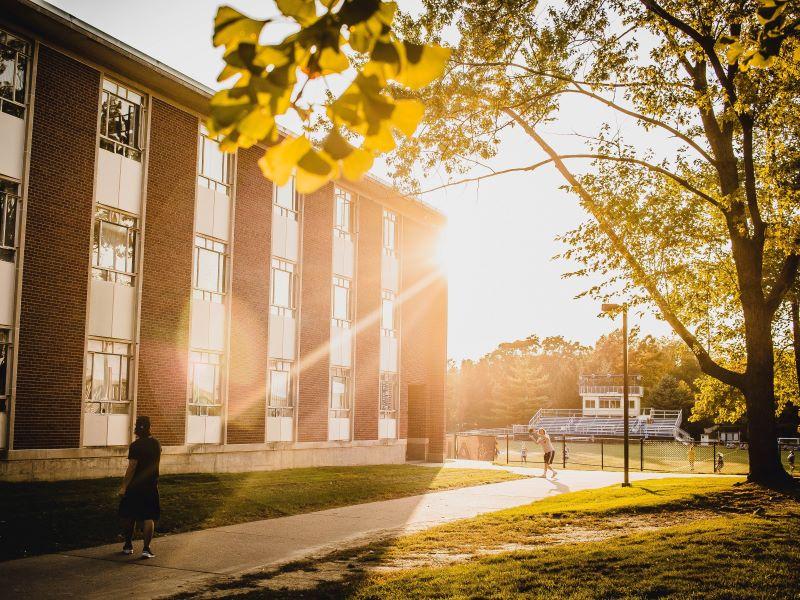
What determines the success of an international branch campus?
What do successful international branch campuses have in common? Nigel Healey outlines the key characteristics that institutions wishing to extend their presence overseas should take heed of

You may also like
Popular resources
Much has been written about international branch campuses, both in academic literature and university media. Some authors have breathlessly forecast the inexorable rise of international branch campuses to meet the growing demand for higher education from students unable or unwilling to travel abroad. With only 2 per cent of the world’s tertiary students enrolled outside their home country, there is clearly much greater scope for universities to expand student numbers by serving the 98 per cent in their own countries than competing for the tiny minority of students who are internationally mobile.
Other authors have gloomily predicted the demise of the international branch campus, arguing that the phenomenon is transitory. Just as booming demand for higher education coupled with sluggish domestic supply creates conditions for international branch campuses to flourish, so sustained economic development and rising tertiary participation gradually squeeze out international branch campuses. Malaysia is an example of a country that imported international branch campuses in the 2000s to meet excess demand for university places but has now developed a strong higher education system, becoming a major education exporter in its own right.
- THE Campus spotlight: New approaches to the internationalisation of higher education
- International partnerships drive SDG progress – how do we support them?
- Innovative approaches to transnational education
The truth, as ever, is somewhere in the middle. C-BERT, the US research centre that tracks international branch campuses, reports slow growth, with 305 recognised international branch campuses in its latest census. This shows that the number of new international branch campuses born each year is weighed against the premature deaths of almost as many.
So, what determines whether an international branch campus survives to maturity or dies in childhood?
There are clearly many ways to answer this question. One is to follow the approach of two US management scientists, Tom Peters and Robert Waterman, who 40 years ago published the influential book In Search of Excellence: Lessons from America's Best-Run Companies. They studied a group of demonstrably successful US corporations to identify the eight shared characteristics of each: a bias for action; staying close to the customer; autonomy and entrepreneurship; productivity through people; hands-on, value-driven approaches; stick to the knitting (that is, doing what they know best); simple form and lean staff; and simultaneous loose-tight properties (that is, a dedication to core values among diverse staff).
In the same way, by studying the characteristics of international branch campuses that have been successful over an extended time period – such as Monash University Malaysia, the University of Nottingham Malaysia and China, and Heriot-Watt University Dubai – we can deduce the key factors that have contributed to their success.
Equally, looking at the common features of international branch campuses that did not last, such as UNSW Asia and George Mason University Ras al-Khaimah, can offer clues as to what led to their demise. Here are the most striking findings.
An honest and critical business case
Establishing an international branch campus is often the ambition of a visionary vice-chancellor or president and, for those charged with bringing the vision to reality, it is often hard to “speak truth to power”. As a result, business cases are frequently sexed up, with start-up costs underestimated and forecast enrolments wildly exaggerated. Reading University Malaysia had a bumpy ride in its early years because of overly optimistic planning assumptions, while UNSW Asia crashed and burned after one semester amid disappointing enrolments. Those universities that have subjected their business cases to rigorous external scrutiny, typically by audit firms, have been able to enter foreign markets with a much better understanding of the likely returns and the risks to be mitigated.
Long-term commitment to the enterprise
In most countries, after the church, universities are the longest-established institutions. Think the universities of Bologna (1088) or Oxford (1096). It takes time to build a university, and while international branch campuses are sometimes derided as “McDonald’s” franchises, in reality these institutions have their own organisational culture and brand identity that take time to develop. Successful international branch campuses have management teams at the home campus that think in terms of decades, not years.
Broad-based stakeholder support
An international branch campus needs support from a wide range of internal and external stakeholders – the university’s council, management team and staff at the home campus, the host government, the local joint venture partner, students and employers in the host country. Unless this support is sustained across the board, the campus is likely to fail. One of the biggest sources of risk for an international branch campus with narrowly based support is a change of vice-chancellor or president. Without a wide coalition of supporters to defend the international branch campus, a sceptical incoming leader can easily disavow the decisions of predecessors and close down the venture. Such was the fate of UNSW Asia on the arrival of a new vice-chancellor in 2006.
Alignment with the core objectives of the university
The core business of a university is research (the creation of new knowledge) and teaching (the transmission of existing knowledge). Most international branch campuses begin as commercial ventures to export teaching and generate tuition revenues. However, unless the campus begins to develop its own research capacity and capability, it will never shake off the perception – by internal and external stakeholders – that it is a commercial, slightly disreputable outpost of the home university. The University of Nottingham has been notably successful in creating centres of research excellence at its Malaysian and Chinese campuses that have attracted funding from host governments.
In summary, after 30 years, we are now at a point where we can – following the example of Peters and Waterman – look back at the world’s 300-odd international branch campuses and begin to draw conclusions about the characteristics of success. In short, international branch campuses are not a route to quick, easy riches, as many universities have learned to their cost.
Nigel Healey is professor of international higher education and vice-president for global and community engagement at the University of Limerick.
If you would like advice and insight from academics and university staff delivered direct to your inbox each week, sign up for the Campus newsletter.
Additional Links
Find more of Nigel Healey’s research on international branch campuses and transnational education here.



Comments (0)
or in order to add a comment